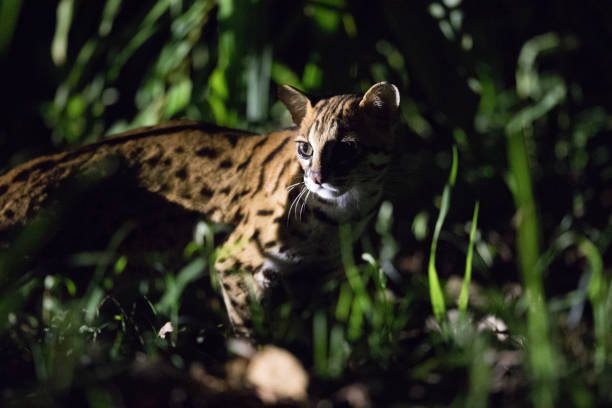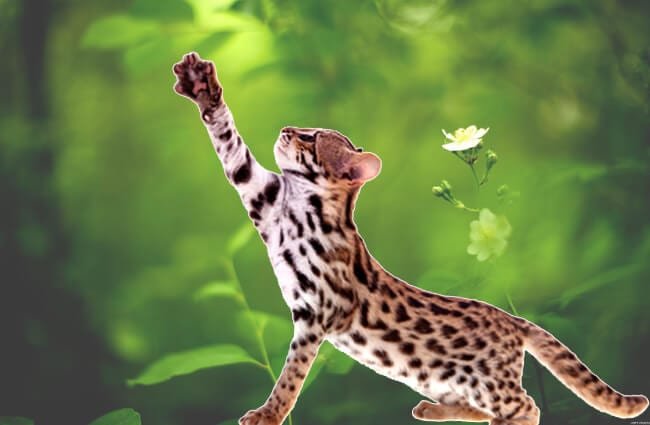
The leopard cat, Prionailurus bengalensis, is a small, highly variable wild cat widely distributed across much of Asia, from the Russian Far East, through China, India, and Southeast Asia, down to the islands of Indonesia. Its name comes from its beautiful coat, which is marked with distinctive black spots and rosees that vary greatly in size, pattern, and color (from reddish-brown to grayish-yellow) depending on its geographic location. With a relatively small head, prominent white stripes running from its eyes to its nose, and a medium-length tail, this adaptable feline thrives in a vast array of habitats, including forests, grasslands, agricultural areas, and even suburban environments, often near water. Primarily nocturnal and solitary, leopard cats are skilled hunters, preying on a diverse diet of rodents, birds, reptiles, amphibians, and insects, and are also known to be adept swimmers and climbers.

The leopard cat plays a crucial ecological role as a pervasive mesopredator across its vast Asian range. By controlling populations of small mammals, particularly rodents, they help to prevent agricultural damage and limit the spread of diseases carried by these prey species. Their widespread presence and adaptability make them a significant contributor to the natural balance of many different ecosystems, from dense forests to cultivated lands. As a foundational species in various food webs, their health reflects the vitality of their habitats, and their existence helps to maintain overall biodiversity. While generally considered widespread, local populations face threats from habitat loss, fragmentation, and illegal wildlife trade. Therefore, protecting the leopard cat is essential not only for the survival of this remarkable and diverse feline but also for the ecological well-being and stability of the numerous Asian landscapes it inhabits.
Every day, wild cats around the world face threats like habitat loss, poaching, and natural climate progression. But hope isn’t lost. With your support, we can protect these majestic animals and preserve their habitats.
Join our growing community of wildlife champions and help create a safer future for all 40 wild cat species.
Zoo-EV is a nonprofit organization dedicated to the protection and preservation of the world’s 40 wild cat species through education, community engagement, and conservation initiatives. Zoo-EV is recognized as a 501(c)(3) tax-exempt organization by the IRS, with the Employer Identification Number (EIN) 88-3636567.